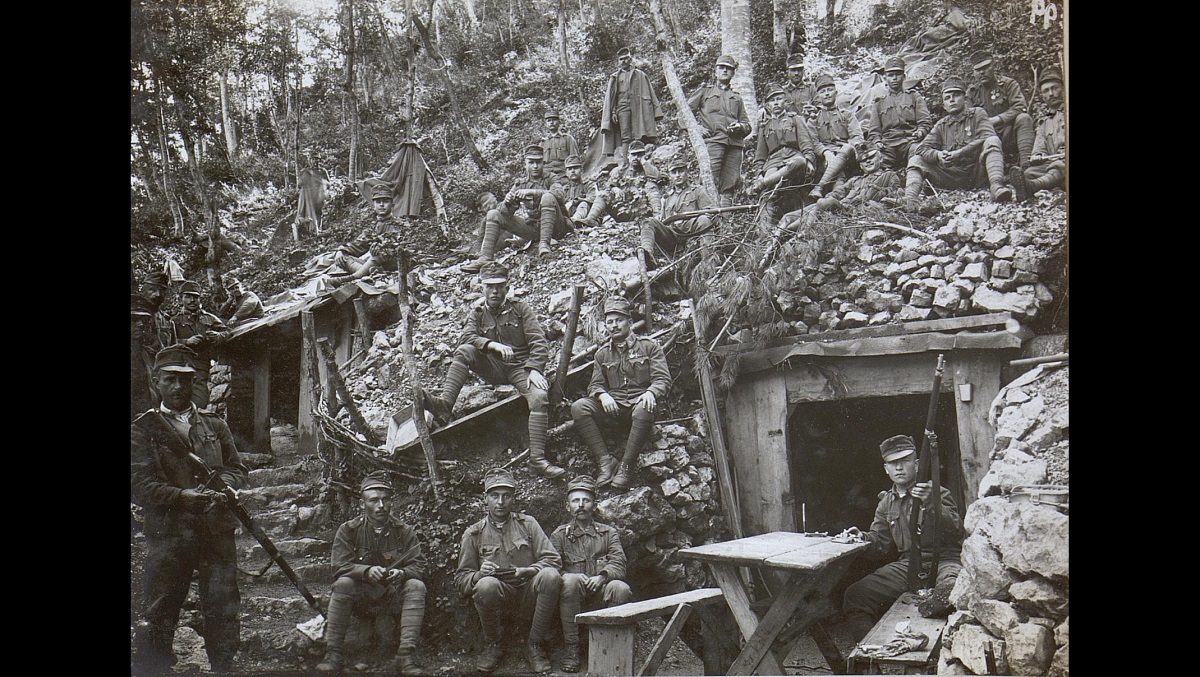
EDITOR’S NOTE: This is the second in a four-part series of articles on how national security professionals should (and should not) approach the fraught task of learning lessons from something as complex as war. We have assembled a team of sharp minds and pens in the business to apply their varying perspectives to the question opened by the Army War College’s Chase Metcalf, how do we think about learning lessons from war? It is a fitting end to 2023 and, unfortunately, will likely be essential in 2024 as well.
As both war and national security became topics of increased public participation, officers, defense analysts, and academics turned to the past to support or critique virtually all national security topics, including doctrine, force structure, reform, and strategy.
Those seeking to contextualize both the current conflicts in Ukraine and Gaza and potential ones against China, Russia, or other threats, often cite history as a source of instruction. This is only common sense, for as General James N. Mattis astutely noted, “we have been fighting on this planet for ten thousand years; it would be idiotic and unethical to not take advantage of such accumulated experiences.” It is no coincidence that one of the first military histories, the Peloponnesian War, was written by a general who explicitly believed the past could inform the future. Such officer-scholars as Xenophon, Julius Caesar, and Leo the Wise continued this tradition, detailing the lessons, hard won through experience, to inform future practitioners of war. The respect accorded to military history accelerated as Western armies created professional officer corps. Campaign studies and biographies became the tools to teach not just practical tactical, logistical, and terrain-reading skills, but also intangibles like character and decisiveness. Military leaders ranging from Frederick the Great to William T. Sherman to George S. Patton set down guidance for future generations. Officer-intellectuals like Carl von Clausewitz and Alfred Thayer Mahan drew on history to inform officers about the making of strategy. As both war and national security became topics of increased public participation, officers, defense analysts, and academics turned to the past to support or critique virtually all national security topics, including doctrine, force structure, reform, and strategy.
Unfortunately, instead of contributing to informed discussion, far too many have bastardized the past into “history proves,” a cliché invoked to confirm preconceptions and suppress dissent. Almost inevitably, such dogmatism takes the form of reductionism, a distilling of complex events, unknown factors, and intangibles such as agency and luck, into a simplistic cause-effect statement that reduces human behavior to a few pseudo-scientific principles. J. F. C. Fuller claimed history demonstrated that all successful operations incorporated eight fundamental rules. Basil Liddell Hart’s investigation revealed only one: the indirect approach. Today too few heed General Mattis’ injunction to study ten millennia of war. Instead, too many deduce their “proofs” from a handful of well-known examples: the revolution in military affairs, the three decades between 1914 and 1945, and the Desert Storm campaign. Among professional historians, the “lessons,” if any, of all these historical events are more subjects of controversy than confirmation. Yet from this tiny sample analysts have drawn, and continue to find, parallels to assert the imminent domination of “buzzwords” like asymmetric, informational, shock-and-awe, or precision-strike. Reductionism in research promotes a reductionist argumentative template: “past (or current) military A was/was not a learning organization and did/did not pursue a correct initiative and won/lost. Today’s B has/has not learned from military A and is/is not pursuing a correct initiative and therefore will/will not win.”
Inherent in the abuse of history is future-war-itis, the deduction of simplistic military lessons by working backward from the outcome of the following war. Pundits insist as if it were an invariable historical truth (it isn’t) that victory in past (and by inference, future) wars went to the side that proved to be most innovative. But how do today’s officers know which side was most innovative until the next war is itself history? The often-cited “lessons” of the blitzkrieg versus Maginot Line comparison rest on our supposed understanding of the 1940 campaign. But once removed from purely operational analysis (and later fiascos) such questions as whether the Germans knew they were practicing blitzkrieg and whether they would have succeeded without the confluence of French and British incompetence, Nazi ideology, the invasion of two neutral states, and the systematic murder of noncombatants render any purported lessons little more than conjecture.
In similar fashion, claims of a ‘new American way of war’ reflect a future-waritis perspective that hangs on swallowing a simplistic interpretation of the 1990-1991 Gulf War as evidence of the wisdom of Cold War decisions. The predictive impact of Desert Storm breaks down if one looks at the specifics of that campaign, nuanced study of U.S. war plans and doctrine for fighting the Soviet Union, the invasion of Iraq a decade later, or the inability of this alleged revolutionary “way of war” to achieve decisive effects in the Balkans, Somalia, or any campaign during the Global War on Terror. A historically informed observer might argue that rather than signaling a revolution in military affairs, Desert Storm was reminiscent of a nineteenth-century imperial campaign for such limited, status quo objectives as imposing a rival claimant on the throne of Tripoli or protecting the opium trade.
A second problem with future-waritis derived lessons is they imply a linear progression between “right” and “wrong” decisions made prior to the conflict, insinuating that a similar choice exists today. But the proof of these right and wrong decisions is based entirely on the results of a later conflict. In war the manifold unknowns that so complicated learning for past and current peacetime armies—the enemy, the theater, the respective leaders and military forces, the materiel, the national and military strategies, etc.—are all resolved. And at least in the American case, the lessons of war have tended to be simple in intent, if difficult in execution, and largely concerned with adaptations in personnel, organization, tactics, and materiel. In many cases these adaptations were so restricted to a particular conflict that they formed no part of the postwar defense establishment. Quite often their most visible legacy was warehouses packed with obsolete, deteriorating equipment. And, as a corollary, today’s innovative wartime leaders may become tomorrow’s reactionaries while their subordinates, rapidly promoted for their leadership or technical abilities during one conflict, may prove inadequate for the challenges of a later and different one.
A third problem with future-waritis is the propensity of its disciples to enshrine a few historic “mavericks” as visionaries bucking an entrenched military caste, thus justifying criticisms of today’s military institutions. But stripped of hero worship, the record of military prophets from Julian Corbett (maritime commerce raiding is in decline) to Billy Mitchell (aircraft carriers cannot attack Pearl Harbor) to Liddell Hart (best to appease Hitler) to John Boyd (maneuver has supplanted attrition) would compare unfavorably even to that of the 134-year-old Dodgers baseball franchise in the playoffs (thirty-seven appearances, seven championships). It should also be noted that none of these prophets were receptive to informed and expert criticism.
A fourth problem with future-waritis is that it lacks strategic context. An often-cited example of revolutionary innovation is the U.S. Marine Corps’ decision to commit to amphibious warfare when most post-World War I expertise viewed it as suicidal. What is often left out of discussions of improvements in doctrine, equipment, and training is that amphibious war’s earliest proponent, Earl “Pete” Ellis, was working within a well-established strategy against Japan. The U.S. Army’s recovery from Vietnam was due in no small measure to prioritizing the NATO mission and conforming to the Soviet-focused national security goals of the Carter-Reagan administrations. That this NATO-designed army—doctrine, equipment, and leadership—would later fight then-client Iraq was unforeseen by its architects. Many can recall the historical precedents cited to support such top-down forced innovation as Effects Based or Full Spectrum or Rapid-Decisive or Multi-Domain Operations, or FM 3-24 Counterinsurgency, all of which were prefaced with the “innovate-or-lose” cliché and all predicting future victory. That none of these recent purported revolutions endured suggests that absent a clear strategic rationale or political support even the most appropriate historical case study is of little relevance.
[D]on’t forget that those who invented military history were not well-educated consultants sprouting the latest classroom theories but were as tough, practical, and successful practitioners of the soldierly trade as anyone today.
Considering the pitfalls inherent in future-waritis, how should military officers draw lessons of history?
First and foremost, most of the obvious lessons (don’t go to war with the three foremost industrial powers, don’t invade a failed state, don’t get sucked into a prolonged war with an opponent who can absorb more punishment than you can) seldom require historical justification, though they are all likely to require understanding and accepting political realities and the limits of military force.
Second, don’t forget that those who invented military history were not well-educated consultants sprouting the latest classroom theories but were as tough, practical, and successful practitioners of the soldierly trade as anyone today. If such authorities as Ulysses S. Grant and Matthew B. Ridgway believed they had advice for the soldiers of tomorrow, they probably deserve consideration. Indeed, their lessons might be better suited for the military professional than those borrowed from business and marketing.
Third, it is an old adage that if all you have is a hammer then every problem becomes a nail. From this perspective, the more historical lessons (or tools) in the box, the more they can provide context, anticipate outcomes, and avoid mistakes.
Fourth, be aware of and beware of the echelon for which you seek to identify and apply historical lessons. A notable exploit by a member of your unit a century ago may provide an excellent introduction to a discussion on training, morale, or small-scale tactics. A study of a battle or campaign can offer harder, but still easily taught lessons on logistics, operations, and command. But officers whose education has rewarded them for citing formulaic historical examples to resolve immediate tactical problems may be at a disadvantage when as strategists they are confronted with complex situations. At that level, history’s lessons often appear ambiguous, demanding appreciation of the primacy (and changeability) of politics in directing war, of skepticism towards ‘war winning’ doctrines or weapons, of factoring intangibles—such as ideology, culture, and will—so hated by those more comfortable with materiel or doctrinal details, and above all, of the unfailing need to adapt when strategies fail. Finally, most military professionals recognize their health is ultimately both their own responsibility and a lifetime commitment. Subsist on junk food, go on crash diets, fail to exercise, or chase fitness fads and your body will eventually pay the price. In similar fashion, invoking “history proves” may convince a skeptical audience that your solution is the correct one. But a string of solutions based on increasingly ill-fitting historical precedents is likely to accelerate disaster. And, as many Pentagon staffers can attest, the Beltway pundit who cites a superficial example from the past as a slam-dunk solution for the present seldom returns to apologize for the disastrous consequences which follow. History’s greatest lessons are not one-off answers to immediate problems, but the awareness of the complexity of conflict. They lead us to appreciate both long term and immediate causes and consequences, the importance of contingency and agency, and the dangers of imposing principles, rules, or doctrines on a species as historically unpredictable as humans. Ultimately, historical study may only help you make slightly fewer mistakes than your opponent. But, if history proves anything, it is that this is often good enough.
Brian Linn is a Professor of History and the Ralph R. Thomas Professor in Liberal Arts, at Texas A&M University. He specializes in military history and war and society in the 20th century.
Brian Donlon is an active-duty United States Marine Corps officer pursuing a Doctor of Philosophy degree in History at Texas A&M University. The concentration of his studies is military innovation in the 20th century, with a focus on the late Cold War. He is part of an initiative called the Commandant of the Marine Corps Strategist Program (CMCSP), that sends officers for graduate studies at a civilian institution. After completion of his studies in 2024, Brian will be assigned as a strategist at a joint or service command, supporting senior civilian and military leaders in the development of national, defense, and service strategies.
The views expressed in this article are those of the author and do not necessarily reflect those of the U.S. Army War College, the U.S. Army, or the Department of Defense.
Photo Description: In 1917, Austrian soldiers on the Italian Front pose near dugouts near what is present-day Tolmin, Slovenia.
Photo Credit: Kuk War Press Quarter, Photo Office – Vienna courtesy of the Austrian National Library





As to the topic above, consider the following questions and answers:
Q: What is the historical period that our adversaries may be studying most today and why?
A: The Old Cold War, because that is the period in history that (1) they believe most closely resembles the conflict environment of today (but reversed, see below), that is (2) the period in history in which they were most recently defeated (thus, something like their “battle of Rena?”) and that is (3) the period in history in which:
a. Those seeking to achieve revolutionary political, economic, social and/or value change both at home and abroad (such as the Soviets/the communists did back then, and such as the U.S./the West has done since the Old Cold War); these folks learned that they could be defeated by:
b. Those seeking to prevent — and/or to roll back — these such revolutionary changes. (That would appear to be the focus of the Soviet’s/the communists’ great power and small opponents, their state and non-state actor opponents, and their both at home and abroad opponents in the Old Cold War of yesterday — and that would appear to be the focus of the U.S./the West’s great power and small opponents, our state and non-state actor opponents, and our both at home and abroad opponents in the New/Reverse Cold War of today.)
Question — Based on the Above:
Does the historical comparison, “contextualizing” and “political objective” discussion (see the first paragraph of our article here) — that I attempt to do above — does this, really, serve no important (see the second paragraph of our article above) purpose?
Battle of Jena — not Battle of Rena.
Apologies.
This is a relatively small quibble with the authors, but it is an important flaw to point out because it is one consistently repeated and not at all with what can be found in the research literature, if one cares to read it. John Boyd never claimed that maneuver replaced attrition. This is not a new claim, and while it could be excused in past decades because the literature on Boyd was slim, it is less excusable now when there has been significant work done on it. Three excellent sources that go directly into what Boyd really thought and said, and which are all based on primary sources, are Frans Osinga’s “Science Strategy and War” (unfortunately only available as paid book), “A New Conception of War” on Boyd’s influence on the Marine Corps (https://www.usmcu.edu/Portals/218/ANewConceptionOfWar.pdf?ver=7GGgGkcjmO0iqS9n5P5C-w%3d%3d), and a full transcript of Boyd’s “Patterns of Conflict” (https://static1.squarespace.com/static/5497331ae4b0148a6141bd47/t/5af842f8758d4615555d3f6d/1526219514965/Patterns+of+Conflict+Transcript.pdf).
Close reading of these sources, based on Boyd’s own words and not misperceptions passed down second-hand, reveal far more nuance and depth to what Boyd actually said—which was far less bumper sticker than “maneuver has replaced attrition.”
Well! Quite the peevish diatribe! Is there any main point here or is this just scattershot anti-intellectual grumpiness? The colloquial flippancy of the argumentation, the apparent sweep and chaotic structure, the vagary over premises and claims, and the absence of clear conclusions makes it hard to critique in specific terms. Theoreticians are well aware that historians dislike theory and theoreticians, so much so that they become familiar with these kinds of emotionally-charged round-house swings. For theoreticians, it is sufficient that historians do what they do: perform research, marshall facts, draw local, atheoretical conclusions, and leave the theoreticians and social scientists to carry the work forward.
The mystery is why the historians resent theory and theoreticians and seek to disparage their work. The charge is usually that any distilled inference from large bodies of data is impossible; here the charge is that is it always wrong, and apparently foolishly so. Here the uniformly simplistic counter-claims tumble out in such profusion the writers left themselves no time/space to substantiate any one of them, and each would require a good page of text to substatiate (or even explain), and another to refute or correct (if not in fact a volume for each swipe and defense).
But, to make a few observations: pattern-recognition/theorizing is a sound and highly useful discipline, albeit challenging; back-casting from observed events to causes is a perfectly sound practice, albeit, yes, challenging; and the actual ‘future-war-itis’: forecasting — the projection of observed patterns/trends so as to better anticipate the nature of future conflict — is immensely important and valuable, however (again) challenging.
And the best thinkers in history who undertook this theorizing and projection: J.F.C. Fuller, B.H. Liddell Hart, and John Boyd, were all sound practitioners who drew valid conclusions concerning principles and doctrine.